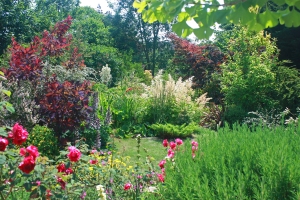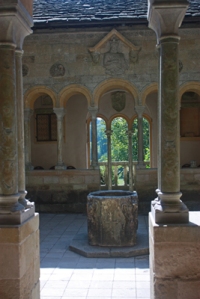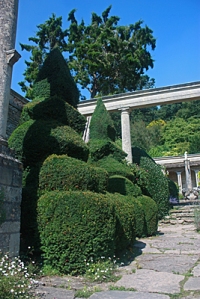West Dean is an art college in West Sussex in the south of England. The garden is absolutely an “exemplary garden” with a spirit of place and degree of excellence in gardening that left me wryly humbled, inspired and quite simply very, very impressed when I visited in May 2019. I had previously seen it celebrated for the Harold Peto-designed pergola and a rigorous approach to formative pruning. The authors of this extensively illustrated book were gardeners at West Dean from 1991 when they started renovating the place after storm damage had been cleared, until recently. The book is about how the garden was planned and run when the authors were gardeners there.
It is typical of the book that there is a much more precise description that is usually provided of the prevailing weather, light and soil conditions. Of relevance to Limestone Garden is the “alkaline soil” and the way that it is “exceptionally free-draining”, “a bonus in the winter…very prone to drought”. Even if you cannot get to West Dean, a look at the pictures in this book will reassure you that it is possible to have a wonderful garden on free-draining calcareous soil.
I think it cannot be known who planned the landscape around the house as it is not mentioned although it is described as a “designed landscape”. The first substantive chapter of the book broadly describes the planning process when the authors moved to West Dean, with a clear intention of providing helpful advice to others who might wish to plan a garden. Elements of their design are discussed and illustrated in subsequent chapters – framing, movement (an entire, beautifully illustrated and interesting chapter on their paths!), structures (including that Harold Peto pergola) and water. A chapter on soil again gives illustration of good practice including plenty of pictures of compost and manure! Chapters then include ‘under glass’, lawns, trees, shrubs, perennials and bulbs, the fruit garden and the productive garden; these latter two I found particularly interesting for their discussion of formative pruning of fruit trees (a striking feature of the gardens) and a note that as West Dean is an art college, the ‘productive’ garden is in fact managed to be beautiful rather than to maximise production.
I’m not sure how to describe the gardens without either using too many superlatives or failing to do them justice. The book explains some of the ‘secrets’ of their success, for instance that there was a deliberate consistency of materials (especially flint) in the garden and buildings, and I noticed that drifts of plants are also a striking and effective feature. All plants seem really healthy and properly cared for and everything is neat. Attention is paid to form and colour. There are a variety of shade and sunny areas and there is water. (At least, there was water while we were there. The book describes how the chalk stream (the River Lavant) dries up in the summer but the silt is cleared away to reveal the rather charming flint lining of the channel.) There are wild flower areas in the lawns. It really is a very good, well-managed garden, amply illustrated.
This book with its evidence of professionalism in the recent planning and running of a historic garden gives a strong insight into at least some of the basis for the striking cohesiveness and on-going excellence of the gardens at West Dean. It is not a how-to-do-it book but it provides inspiration (and even a reference for all that formative pruning).
Buckland, Jim & Wain, Sarah (2018) At West Dean. The creation of an exemplary garden. London: White Lion ISBN 978-0-7112-3892-3 RRP UK£40, US$60, CAN$78
https://www.westdean.org.uk/gardens








